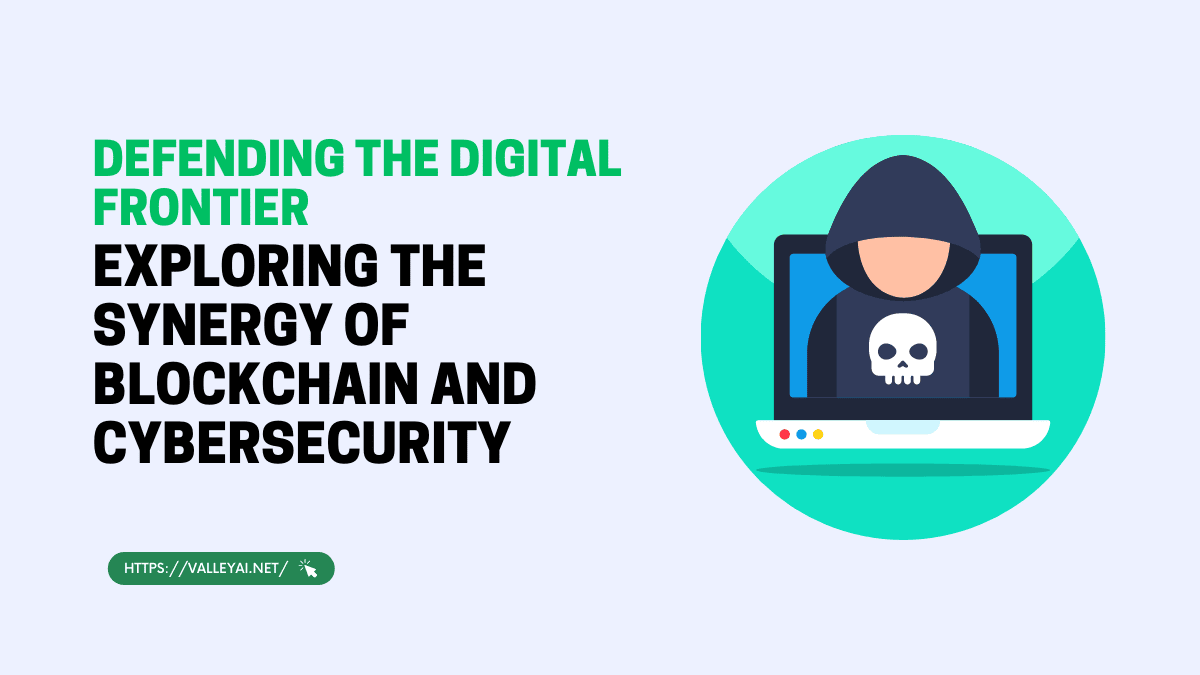Let’s explore the powerful synergy between blockchain and cybersecurity. Blockchain technology is a secure method of sending protected transactions.
However, many people are unaware that blockchain may also be used for commercial communications, providing protected, more secure communications that are safer than those sent over conventional networks.
By combining their knowledge and utilizing new tools, cybercriminals are upping the frequency and sophistication of cyberattacks. They use botnets, machine learning, and artificial intelligence (AI) more effectively to commit cybercrime, which results in significant and more pervasive damage.
Modern cybersecurity concerns are frequently too complex for traditional solutions to handle alone. Therefore, we must investigate additional methods, like blockchain technology, to enhance information security.
Businesses have also encountered new difficulties, such as reducing security risks as more employees work remotely, connect to company networks using personal devices, and use new collaboration software.
Below, we’ll tackle the relationship between blockchain technology and cybersecurity in effectively securing the digital frontier.
What is Blockchain Technology?
According to IBM, the blockchain is “a shared, immutable ledger that facilitates the process of recording transactions and tracking assets in a business network.” It is a system for safely, openly, and economically tracking anything of value.
The term “blockchain” was coined because each transaction is recorded as a “block” of data. One or more data types, such as amount, price, or location, may be recorded in a block.
As the ownership of the asset changes, these blocks link together to form a chain. Each transaction’s specifics, including times and order, are contained in the chain.
There is no single point of failure with a blockchain. Since every chain is immutable, no participant can break a link to introduce a block. One of these cryptographic chains is nearly impossible to tamper with because every transaction in the chain has its accuracy verified by a consensus method that has been agreed upon.
Due to the nearly untraceable ownership of assets on blockchains, the technology is advantageous to hackers who receive ransomware payments in cryptocurrencies like Bitcoin.
Blockchain technology can be used by organizations and cybersecurity experts as well, as many of them are now integrating blockchain-enabled cryptocurrency payments for employees.
The Relationship Between Cybersecurity and Blockchain Technology
Because blockchain technology is a decentralized system founded on the tenets of security, privacy, and trust, cybersecurity is ingrained in its very essence.
It is quick and transparent, economical, and more secure. Anyone who wishes to track assets and view transactions, such as payments, orders, and accounts, end-to-end can access the real-time data on a blockchain network.
It’s vital to remember that while seeing transactions or transmissions may be instantaneous, uploading individual records may be slower than with conventional data networks because of encryption and serialization procedures.
The advantages of blockchain for cybersecurity are as follows:
Decentralization
A blockchain does not rely on a single reliable central authority but rather a decentralized distributed ledger system. Because transactions are recorded on every network node using distributed ledger technology (DLT), thieves have difficulty accessing, stealing, or altering data. It is intended to foster confidence among participants in circumstances where it is difficult to do so.
Read also: The Web3 Hype: AI In The Decentralized Web
Collaborative Consensus
Blockchains can monitor the ledger for anomalous or malicious behavior because of their collaborative consensus method.
Strong Encryption Practices
Blockchain networks efficiently leverage public key infrastructure for digital signatures and encryption. It includes verifying configuration changes, authentication tools, and communication security.
Blockchain technology frequently relies on an infrastructure of asymmetric cryptographic keys and digital signatures to verify data ownership and data integrity. In certain instances, these components replace the need for passwords, a common attack vector used by cybercriminals to obtain unauthorized access to networks and accounts.
Immutable Records
A blockchain ledger’s entries cannot be changed by anyone. The only way to fix a record’s problem is to create a new transaction, in which case both transactions will be readable.
IoT Security
Due to their inherent weaknesses, Internet of Things (IoT) devices are frequently targeted by cybercriminals as their applications spread across more industries. Blockchain offers users of IoT devices more secure.
Data Security
A permission blockchain network will only permit trusted networks to watch or participate in transactions, even though transparency is one of the main advantages of using blockchain, with everyone able to witness immutable transactions. With the least amount of governance, this is possible.
Additionally, because blockchain lacks the usual objectives that fraudsters are after, it is more difficult for them to gain illegal access by focusing on privacy standards.
Smart Contracts Security
On the blockchain, smart contracts record sets of instructions that, when satisfied, cause transactions to occur. Payments are more convenient because of this automation. Due to testing for identification, data security, access control, and business logic validation, blockchain technology remains secure.
Final Thoughts
Some companies have neglected to follow important cybersecurity best practices because they were so taken aback by the security benefits of embracing blockchain technology.
To create a secure ecosystem in which to use blockchain technology, businesses must continue to follow established cybersecurity best practices.
Admin
My name is Kaleem and i am a computer science graduate with 5+ years of experience in AI tools, tech, and web innovation. I founded ValleyAI.net to simplify AI, internet, and computer topics while curating high-quality tools from leading innovators. My clear, hands-on content is trusted by 5K+ monthly readers worldwide.

